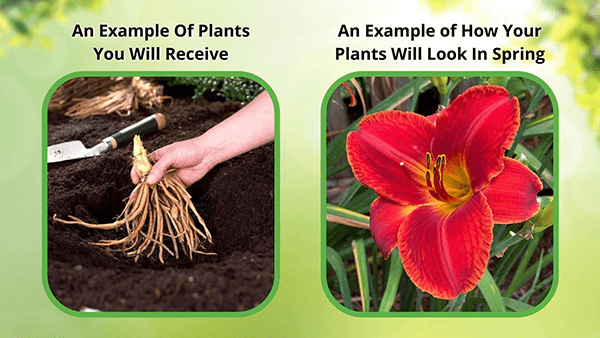1
/
of
3
Partridgeberry Plant
Partridgeberry Plant
No reviews
| Order | Percentage Discount | ||
|---|---|---|---|
| 2-5 | 25% Off | ||
| 6-10 | 30% Off | ||
| 11-25 | 35% Off | ||
| 26-50 | 45% Off | ||
| 51+ | 65% Off | ||
Regular price
$4.49 USD
Regular price
Sale price
$4.49 USD
Unit price
/
per
Couldn't load pickup availability
Ships:
5-7 Days
Height at Maturity:
Under 12"
Exposure:
Sun or Shade
Planting Zones:
3-9
Usage:
Groundcover
Shipped As:
Bare-root
Partridgeberry Plant - Mitchella Repens
The partridgeberry plant (Mitchella repens) is a low-growing, evergreen perennial native to North America. It is part of the Rubiaceae (coffee) family and is known for its creeping growth habit, red berries, and small, glossy green leaves. Low growing, it is typically 3 - 6 inches tall, with a spread up to 2 feet wide.
Key Characteristics
-
Scientific Name: Mitchella repens
Common Names: Partridgeberry, twinflower, running box, squaw vine - Native Range: Eastern North America, from Canada to the Southern United States
- Habitat: Prefers shady, forested areas, often growing under hardwood trees in moist, acidic soils.
Appearance
-
Leaves:
- Small (up to 1 inch in diameter), rounded, dark green with a shiny surface.
- It may have a pale midrib.
-
Flowers:
- Small, tubular, and white to pinkish.
- The plant is unique because two flowers are joined at the base, forming a single, four-lobed corolla, giving rise to the name "twinflower."
- The flowers are also fragrant and attract bees and other pollinators.
- Bloom in late spring to early summer.
-
Berries:
- After the flowers fade, the plant produces bright red berries about pea size.
- Bright red, round, and persistent through winter.
- It is not highly flavorful but edible for humans and an essential food source for birds and other wildlife.
Growing Conditions
- Light: Thrives in partial to full shade.
- Soil: Prefers well-drained, acidic soil with organic matter.
- Watering: Requires consistent moisture but does not tolerate waterlogging.
- Hardiness Zones: USDA zones 4-8.
Ecological and Cultural Significance
- Wildlife: Provides food for birds, small mammals, and insects.
- Medicinal Uses: Historically, it has been used by Indigenous peoples for its astringent and medicinal properties, particularly for treating digestive and urinary issues.
- Ground Cover: Its dense, mat-like growth makes it an excellent ornamental ground cover for shaded areas.
This Is How Your Plants Will Look upon Delivery
Planting bare-root perennials is best in any season if they are dormant; we only sell dormant plants. Planting them year-round is also excellent if you can get dormant perennials. When your bare-root perennials arrive, soak the roots in water for a few hours to rehydrate them. Lant by digging a hole wide enough to spread the roots comfortably and deep enough to place the top portion crown (where the roots meet the stem) at or slightly above ground level. Position the plant in the hole, backfill with native soil, and gently firm the soil around the roots—water well after planting to settle the soil around the plant and eliminate air. Apply a 2-3 inch layer of mulch to keep weeds at bay and moisture locked in, keeping the mulch away from the crown. Irrigate plants regularly during the first few weeks of drought; never water in full sun, and water late in the evenings to ensure the roots are established well. Fertilize sparingly in the first year, using a balanced, slow-release fertilizer in subsequent years as needed.
Shipping date depends on the date displayed and chosen when you order from the product's page.
We only accept returns on plants verified dead. If you think your plants have died, we offer a 1 year warranty, please use use this File a Claim Link to verify dead plants and start with return warranty process.









